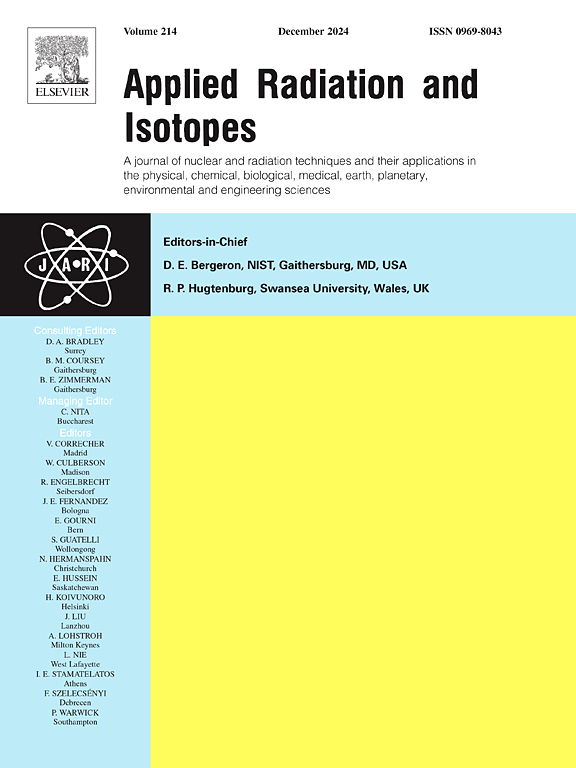Ion implantation of the electron-capture nuclide 55Fe for measurements by means of metallic microcalorimeters
IF 1.6
3区 工程技术
Q3 CHEMISTRY, INORGANIC & NUCLEAR
引用次数: 0
Abstract
Precise measurements of fundamental decay data such as energies and transition probabilities of radioactive isotopes are important for the development of corresponding nuclear modelling, activity determination and various applications in science and technology. The EMPIR project PrimA-LTD -“Towards new Primary Activity standardisation methods based on Low-Temperature Detectors” - aims to measure the electron-capture decay of 55Fe very precisely using Metallic Microcalorimeters (MMCs) with outstandingly high energy resolution. Using a high-statistics measurement, electron-capture probabilities shall be precisely determined and higher-order effects such as electron shake-up and shake-off shall be examined with unprecedented precision. A key to success for this project is sample preparation. This work reports on the implantation of 55Fe into the 140 μm × 140 μm gold absorbers of the MMCs as a proof of principle for scalability. Building up on preparatory laser-spectroscopic studies on stable 56Fe, laser resonance ionization at the RISIKO mass separator was used to produce a monoisotopic 55Fe ion beam with the required specifications. Successful implantations of this isotope (i) into 32 test absorbers with about 0.7(2) Bq each and (ii) into various on-chip absorbers with an activity close to the requested 5 Bq per absorber are presented. The impact of the implantation on the quality of spectra is highlighted on the basis of first MMC test measurements.
求助全文
约1分钟内获得全文
求助全文
来源期刊

Applied Radiation and Isotopes
工程技术-核科学技术
CiteScore
3.00
自引率
12.50%
发文量
406
审稿时长
13.5 months
期刊介绍:
Applied Radiation and Isotopes provides a high quality medium for the publication of substantial, original and scientific and technological papers on the development and peaceful application of nuclear, radiation and radionuclide techniques in chemistry, physics, biochemistry, biology, medicine, security, engineering and in the earth, planetary and environmental sciences, all including dosimetry. Nuclear techniques are defined in the broadest sense and both experimental and theoretical papers are welcome. They include the development and use of α- and β-particles, X-rays and γ-rays, neutrons and other nuclear particles and radiations from all sources, including radionuclides, synchrotron sources, cyclotrons and reactors and from the natural environment.
The journal aims to publish papers with significance to an international audience, containing substantial novelty and scientific impact. The Editors reserve the rights to reject, with or without external review, papers that do not meet these criteria.
Papers dealing with radiation processing, i.e., where radiation is used to bring about a biological, chemical or physical change in a material, should be directed to our sister journal Radiation Physics and Chemistry.
 求助内容:
求助内容: 应助结果提醒方式:
应助结果提醒方式:


